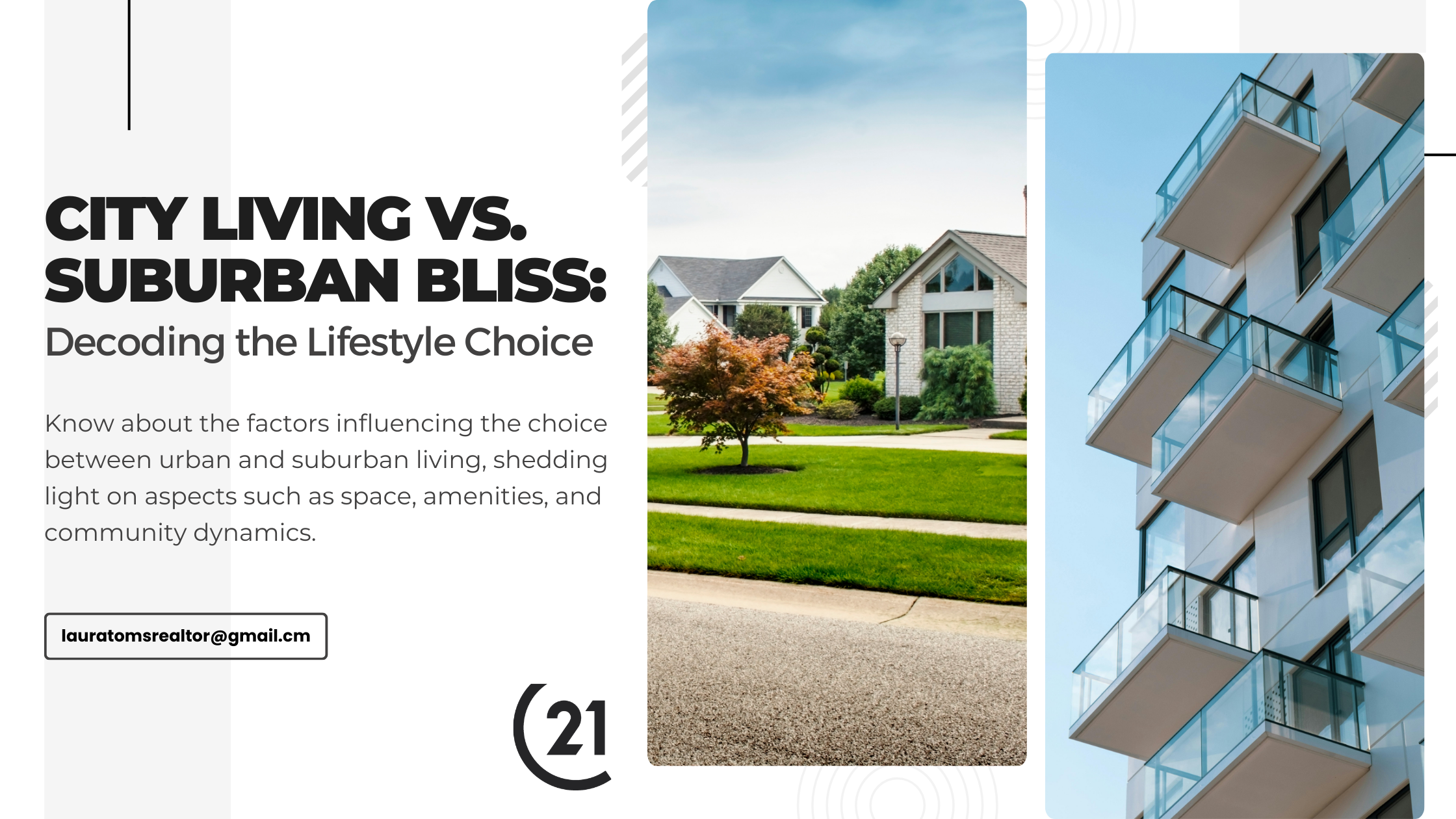The choice between city living and suburban bliss is a pivotal decision that shapes not only our living spaces but our entire way of life. Let’s decode the intricacies of this lifestyle choice, delving into the factors that influence the decision between the vibrant energy of city living and the tranquility of suburban life. From space considerations to community dynamics, know more about the key aspects that guide individuals toward their preferred living environment.
Space and Living Arrangements:
City Living:
In the heart of the city, space is often at a premium. Apartments and condos may offer limited square footage, promoting a minimalist lifestyle. High-rise living provides proximity to urban amenities but sacrifices space for convenience.
Suburban Bliss:
Suburban areas often boast spacious homes with larger yards. Families or individuals seeking more room to spread out may find suburban living more accommodating, with the potential for larger houses and more extensive outdoor spaces.
Amenities and Accessibility:
City Living:
Cities are hubs of activity, offering a plethora of amenities within easy reach. From cultural attractions and dining options to public transportation and job opportunities, urban dwellers enjoy unparalleled access to a diverse range of services and experiences.
Suburban Bliss:
While suburban areas may lack the density of urban amenities, they often compensate with local parks, community centers, and a more relaxed pace of life. Suburban living appeals to those who prioritize a quieter, family-friendly environment.
Commute and Transportation:
City Living:
City dwellers may benefit from convenient public transportation options, minimizing the need for a car. Proximity to work, entertainment, and essential services makes the daily commute more manageable for those living in the heart of the city.
Suburban Bliss:
Suburban residents often rely on personal vehicles, as public transportation infrastructure may be less extensive. While commutes may be longer, suburban living allows for a quieter, more relaxed atmosphere away from the hustle and bustle of the city.
Community Dynamics:
City Living:
Urban areas thrive on diversity and a constant buzz of activity. City dwellers often experience a sense of anonymity but also enjoy the opportunity to connect with a wide range of people. The city fosters a dynamic and cosmopolitan community.
Suburban Bliss:
Suburban communities are often close-knit, fostering a sense of familiarity and neighborly bonds. Residents may participate in local events, schools, and community activities, creating a strong sense of belonging.
Cost of Living:
City Living:
The cost of living in cities is typically higher, with housing, utilities, and amenities often commanding premium prices. City dwellers may trade off space for the convenience and excitement that urban living provides.
Suburban Bliss:
Suburban areas generally offer a more affordable cost of living. Larger homes, lower property taxes, and reduced expenses on certain amenities contribute to a more budget-friendly lifestyle.
The choice between city living and suburban bliss is deeply personal and hinges on individual preferences, priorities, and lifestyle goals. Understanding the dynamics of each environment—from space considerations and amenities to community dynamics—enables individuals and families to make an informed decision that aligns with their unique values and aspirations. Whether you’re drawn to the energy of the city or the tranquility of the suburbs, the key is to find the perfect balance that enhances your overall quality of life.


 Facebook
Facebook
 X
X
 Pinterest
Pinterest
 Copy Link
Copy Link


